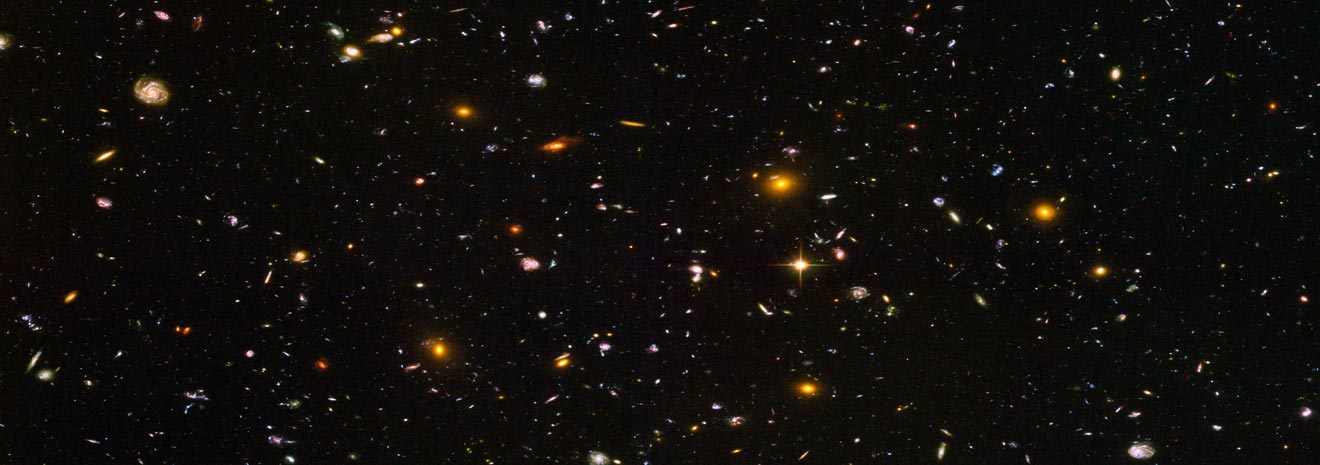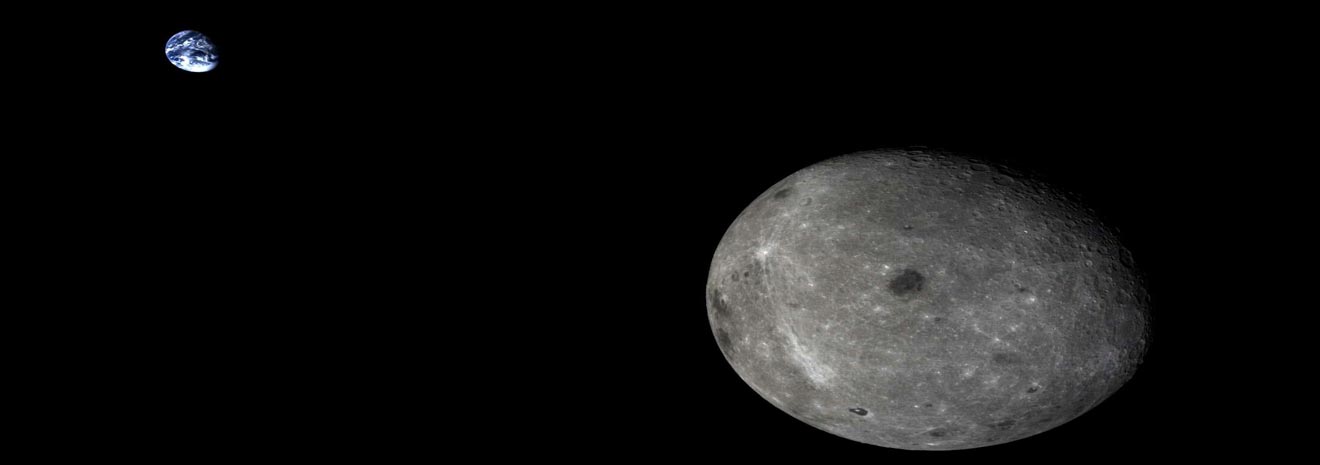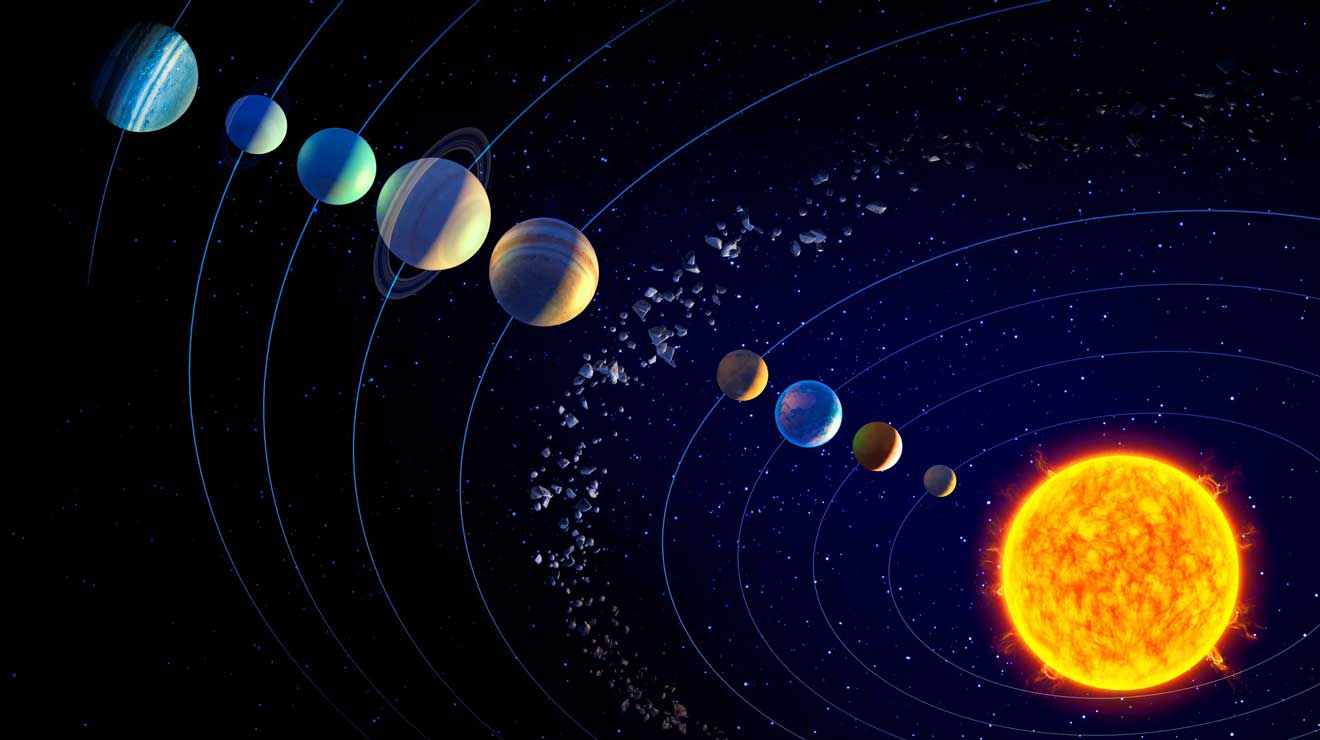Do you know Jupiter hosts over seventy moons? And, poor Pluto is not considered a planet anymore! Our very own solar system of eight planets continues to reveal amazing facts and inspire some out-of-this-world fantasies.
Test your knowledge of the planets and the sun with this fifty question solar system quiz! But, beware, you really need to have a lot of knowledge about the solar system. You can proudly call yourself an astronomy geek if you pass this solar system quiz with flying colors.
Wish you best of luck!
What is the ‘Great Red Spot’?
Great Red Spot is an enormous, persistent cyclonic storm on the planet Jupiter
How much would a 100 kg person weigh on Mars?
Mars has a gravity roughly 30% of that of Earth
How long is a Saturnian Day?
Saturn rotates fast! A Saturnian day is a mere 10 Hours, 47 Minutes, measured in Earth time.
This planet has a temperature hot enough to melt lead?
Venus is the hottest planet, featuring temperature hot enough to melt lead.
This planet has the highest Volcanic mountain in the solar system
Olympus Mons on Mars is the largest volcano in the solar system
Which feature distinguishes Uranus from other planets?
Uranus is the only planet whose equator is nearly at a right angle to its orbit
What speed of winds does Neptune have?
Neptune is the windiest planet with winds flowing at speed greater than the speed of sound.
Which of these phenomena occurs on Mars?
Mars is dusty. Like, really dusty.
Which of these planets have rings?
If you thought only Saturn has rings, then learn - Jupiter, Saturn, Uranus, Neptune - all have rings.
How are the orientations of orbits of the planets in the Solar System?
Orbits are exactly in same plane
Orbits surround Sun in different planes
Orbits are more or less in same plane
Orbits keep changing
The planets in our solar system orbit our sun more or less in a single plane.
What are the giant planets also known as?
Jupiter, Saturn, Uranus and Neptune are giant planets, also called outer planets for their location outside Asteroid belt, also called Gas Giants for their gas surfaces, and also called Jovian for their proximity to Jupiter.
Which statement describes the atmosphere of the planet correctly?
Saturn is mostly helium
Earth is mostly oxygen
Mercury is mostly nitrogen
Venus is mostly carbon-di-oxide
The atmosphere of Venus is composed of more than 96 percent carbon dioxide
To weigh roughly one-third of what you do on Earth, which planet would you be on?
Mars has a gravity roughly 30% of that of Earth
How long does it take for light from the Sun to reach Earth?
It takes an average of 8 minutes for light to travel from the Sun to the Earth
How old is the Solar System?
Our solar system formed about 4.5 billion years ago
Which planet is the smallest?
Mercury is the smallest planet in the solar system, and is a little bigger than Earth's Moon.
That's called a Satellite
Anything that orbit planets
A natural object that orbits Earth
A natural object that orbit planets
A man-made object that orbits Earth
Satellite by definition is a celestial body orbiting the earth or another planet - artificial or natural.
Where do comets originate?
Most comets originate in a vast cloud of ice and dust that surrounds the solar system, The Oort Cloud
Which is the largest asteroid in the asteroid belt ?
Ceres is the largest asteroid, about one-quarter the size of the moon.
What are Mercury, Venus, Earth and Mars grouped as?
Unlike gas giants, these planets feature a rock core making them terrestrial and lie inner of the asteroid belt.
What distance is 1 AU or one Astronomical Unit?
Distance between Sun and Asteroid Belt
Distance light travels in one minute
Distance between Sun and Kuiper Belt
Distance between Sun and Earth
One Astronomical Unit (AU) is an astronomical unit of distance effectively equal to the distance between Earth and the Sun.
How much is distance 1AU?
One astronomical unit is equals to 150 million kilometers or 8.3 light minutes.
Where does the asteroid belt lie?
Between Earth and Moon
Between Kuiper Belt and Oort Cloud
Between Mars and Jupiter
Between Earth and Mars
Asteroid belt lies between the orbits of Mars and Jupiter.
Which planet is named after the Ancient Roman Goddess of Love?
The Romans named the brightest planet, Venus, for their goddess of love and beauty.
Remove the odd man out
Kuiper Belt, Comets, Inner Planets are objects in the solar system
What causes a solar eclipse?
The moon casts a shadow on the Earth
Sun has a darker side too
A large star blocks our view
Venus blocks our view
When the Moon blocks the light of the Sun from reaching Earth, it causes an eclipse of the Sun, or a solar eclipse.
How is the atmosphere on Venus?
Venus is the hottest planet and has an acidic, toxic atmosphere filled with carbon dioxide.
Every how many years does Halley’s Comet passes by the Sun?
Halley's Comet's orbit period is, on average, 76 Earth years.
Olympus Mons is a large volcanic mountain on which planet?
Olympus Mons on Mars is the largest volcano in the solar system
Which is Saturn’s largest moon?
Titan is the largest moon of Saturn and the second largest moon in the solar system
Ganymede is a moon of which planet?
Ganymede is the moon of Jupiter, and is the largest and most massive of the Solar System's moons
Which planet has Sulphuric Acid rains?
The most acidic rain of Sulphuric Acid in the Solar System is found on the planet Venus
Which planet rotates sideways?
Uranus tilts almost 98 degrees! Uranus' axis is so tilted, it actually looks like the planet is rotating sideways
What causes abnormal rotation of planets like Venus and Uranus?
Venus and Uranus originally rotated counter-clockwise – like Earth and the other planets still do – but were struck at some point by other planets that sent them spinning in different directions.
What is the name of Sun’s mysterious twin star?
Nemesis is a hypothetical star thought to be orbiting the Sun, forming a twin star system
What is the belt outside of Pluto's orbit called?
Kuiper belt, also called Edgeworth-Kuiper belt, comprises small bodies that revolve around the Sun beyond the orbit of the planet Pluto.
Which moon has mysterious ocean below its surface?
Europa's, Jupiter's moon, has a vast and deep ocean below its solid surface.
Which object is the most volcanically active in the solar system?
Io, a moon of Jupiter, is the most volcanically active object in our solar system.
What percent of the Solar System’s mass does Sun hold?
The sun holds over 99.9% of the total solar system mass, leaving only 0.1% for planets, moons and asteroids.
Which planet has a hexagonal North Pole?
Saturn has a persistent hexagonal cloud pattern around the north pole
How many days does moon take to rotate around Earth?
The moon orbits the Earth once every 27 days.
The Galilean and Amalthea moons orbit which planet?
Galilean and Amalthea are part of the system of Jupiter's over 70 moons
What causes Aurora?
Aurora displays are generated by the massive explosions on the Sun causing huge solar winds
Which dwarf planet has longest and most mysterious orbit of over 12,000 years?
Sedna has an exceptionally elongated orbit, and takes over 12,000 years to orbit the Sun
Which planet featured a ‘Great Dark Spot’?
The Great Dark Spot was a huge spinning storm in the atmosphere of Neptune which was about the size of the entire Earth.
Which object is called as King of the Kuiper Belt?
Pluto is known as the "King of the Kuiper Belt" – and it's the largest object in the belt.
On which planet does the sun rise in the west?
Venus spins in the opposite direction from most other planets, including Earth, so that on Venus the sun rises in the west.
Its the Red planet
Red Planet is a nickname for the planet Mars, due to its surface color.
Oops! That was a BAD performance
Your knowledge about the solar system is really poor. We suggest you to brush up your skills with our blogs, books and activities.
Nice! That was a GOOD performance
You have good enough knowledge about our solar system. However, you can improve your skills with our blogs, books and activities.
Excellent!
You have an excellent knowledge about our solar system. Keep up your skills with our blogs, books and activities.













Add Comment